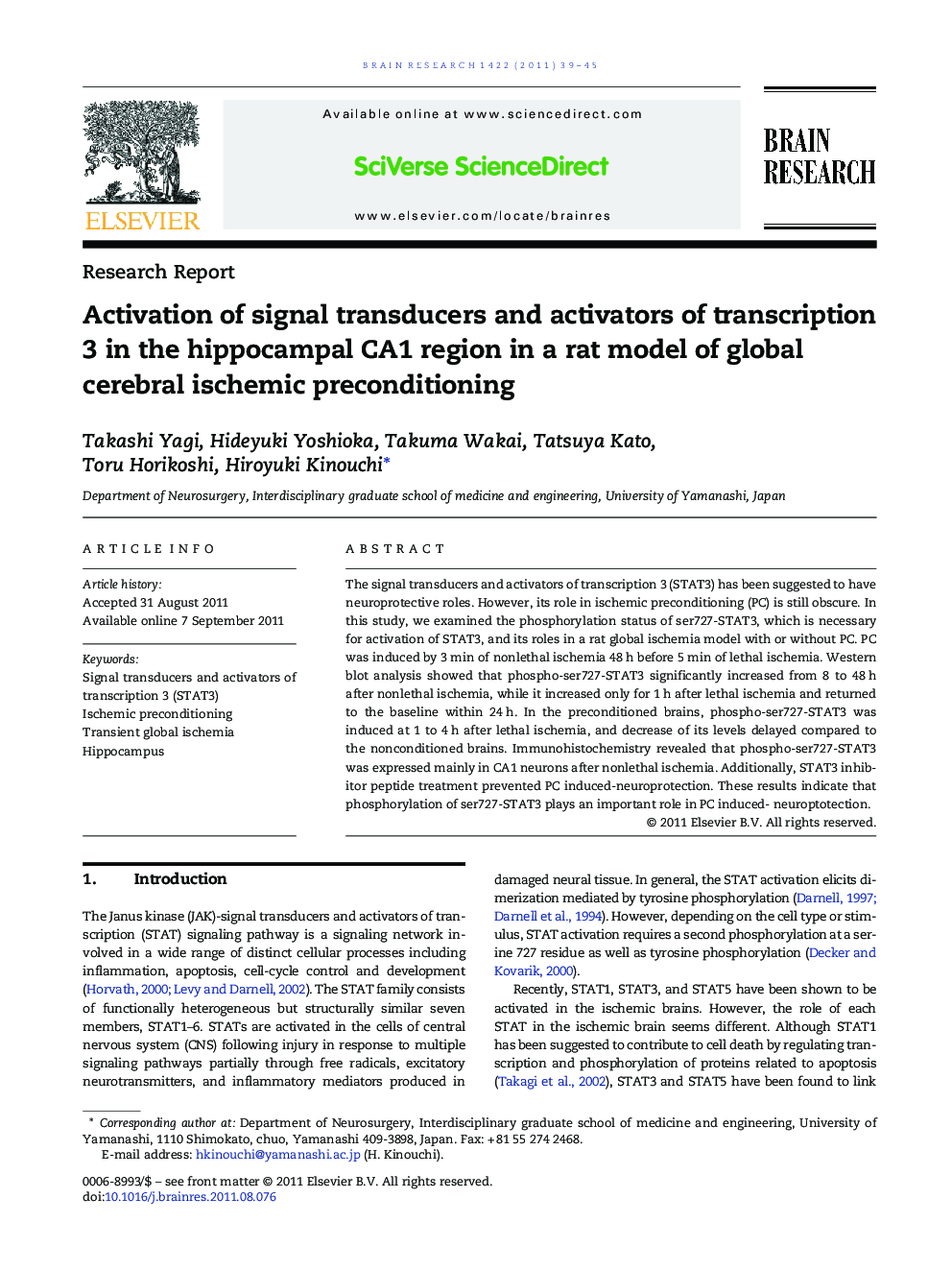| Article ID | Journal | Published Year | Pages | File Type |
|---|---|---|---|---|
| 4325575 | Brain Research | 2011 | 7 Pages |
The signal transducers and activators of transcription 3 (STAT3) has been suggested to have neuroprotective roles. However, its role in ischemic preconditioning (PC) is still obscure. In this study, we examined the phosphorylation status of ser727-STAT3, which is necessary for activation of STAT3, and its roles in a rat global ischemia model with or without PC. PC was induced by 3 min of nonlethal ischemia 48 h before 5 min of lethal ischemia. Western blot analysis showed that phospho-ser727-STAT3 significantly increased from 8 to 48 h after nonlethal ischemia, while it increased only for 1 h after lethal ischemia and returned to the baseline within 24 h. In the preconditioned brains, phospho-ser727-STAT3 was induced at 1 to 4 h after lethal ischemia, and decrease of its levels delayed compared to the nonconditioned brains. Immunohistochemistry revealed that phospho-ser727-STAT3 was expressed mainly in CA1 neurons after nonlethal ischemia. Additionally, STAT3 inhibitor peptide treatment prevented PC induced-neuroprotection. These results indicate that phosphorylation of ser727-STAT3 plays an important role in PC induced- neuroptotection.
► STAT3 has been suggested to have neuroprotective roles. ► The precise role of STAT3 serine phosphorylation in ischemic preconditioning (PC) remains unclear. ► Activation of phospho-STAT3 after PC corresponded with a time course of induction of ischemic tolerance. ► Phosphorylation of serine727 STAT3 plays an important role in PC induced neuroprotection.
